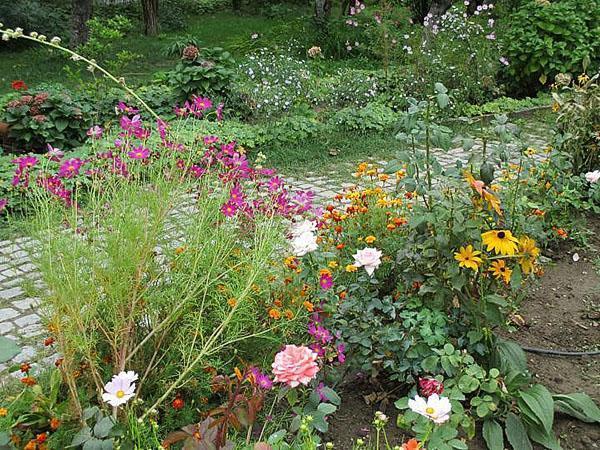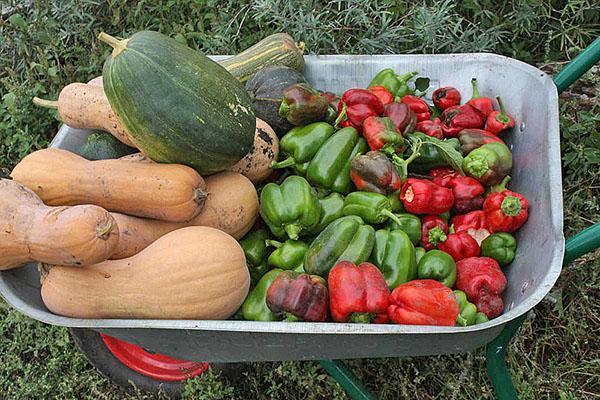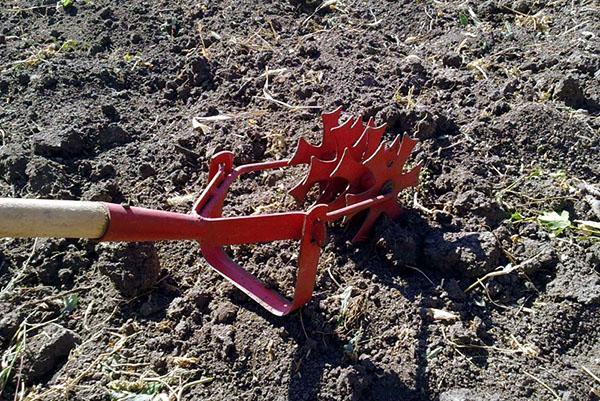How to prepare a summer cottage for winter
 With the arrival of frost, you can slightly extend the life of the plants by covering them with old blankets or burlap on cold nights. But a lack of light and a drop in temperature inevitably lead to a stop in growth. Study weather reports and learn to predict the arrival of cold weather. The tips in this article will help you keep your garden, vegetable garden and flower beds safe during the winter months.
With the arrival of frost, you can slightly extend the life of the plants by covering them with old blankets or burlap on cold nights. But a lack of light and a drop in temperature inevitably lead to a stop in growth. Study weather reports and learn to predict the arrival of cold weather. The tips in this article will help you keep your garden, vegetable garden and flower beds safe during the winter months.
Preparing vegetables for cold weather

Remove the tomatoes, courgettes, peas, and beans. If there are no traces of the disease on the plants, they will be used for fertilization. Those affected should be burned or thrown into a separate heap.
Before the soil finally freezes, remove all weeds and debris from the area, then carry out insect pest prevention.
 Dig the soil thoroughly to look for pests that can survive the winter in the ground. This will reduce insect damage from the heat. After you've tiled the soil, add a layer of fertilizer, leaves, manure (if you have one) and lime (if necessary), and then mix thoroughly with the soil.
Dig the soil thoroughly to look for pests that can survive the winter in the ground. This will reduce insect damage from the heat. After you've tiled the soil, add a layer of fertilizer, leaves, manure (if you have one) and lime (if necessary), and then mix thoroughly with the soil.
Another way is to plant cover crops such as winter rye to improve the soil. If some areas are completely overgrown with weeds, cover them with black plastic before spring to kill any germinating seeds.
Preparing herbs
Now it's time to prepare your herbs for wintering:
- sage is a perennial plant in most regions and does not require special treatment before winter begins;
- Rosemary is an evergreen perennial plant that needs to be either covered well or transplanted indoors;
- thyme is very hardy - it enters a dormant state in the fall, and then recovers on its own in the spring;
- parsley can withstand light frost without problems, however, on cold nights it needs a full-fledged shelter (this biennial plant has a long taproot, so it is difficult to transplant).
The chives should be noted separately. This perennial plant is incredibly tenacious. Dig out the area with the most dense stems and transplant into a pot. Wait for the leaves to fall off and then freeze for several weeks. Then place the pot in a sunny, cool place at home. Water well so that you can harvest onion feathers throughout the winter.
Before the frost stops the sage from growing completely, cut off a few bunches for culinary purposes (for example, you can make a turkey with sage).
Preparation of berries
 In the first half of fall, prune the summer raspberries, leaving 6 of the strongest stems for every 30 cm of the bed. Cut off the autumn raspberries completely, as soon as you collect all the berries. New shoots will sprout in the spring.
In the first half of fall, prune the summer raspberries, leaving 6 of the strongest stems for every 30 cm of the bed. Cut off the autumn raspberries completely, as soon as you collect all the berries. New shoots will sprout in the spring.
Plant the blackberries in fall and cover the stems with soil. This will protect them from severe frost.
 Cover the strawberries with straw or hay.
Cover the strawberries with straw or hay.
Preparation of perennial plants and flowers
Water your perennials and flowering shrubs well during the fall. For this they will thank you in winter. Once the ground is frozen, cut them off, leaving the ends 7 cm high, and mulch with a thick layer of leaves or straw.
If you plan on making a new flower garden next spring, cover the area with mulch or sheeting to prevent chaotic growth when the ground warms up.
Before heavy snowfalls, cover the pachisandra with a layer of pine needles, about 5-10 cm thick.
Move the chrysanthemum pots to a secluded spot when the plants have faded. Cover them with straw mulch for the winter.
When the leaves of dahlia, cannes, and gladioli begin to turn black from the cold, gently dig them up and dry them indoors on a newspaper for a few days. Then place them among pieces of styrofoam, dry peat moss or shredded paper and store in a dark, humid place at 5-10 degrees until spring.
Wintering roses
 Water roses all fall, and stop adding fertilizers 6 weeks before the onset of frost. Remove all dead and diseased flowers. With the first cold weather, cover the plants with compost or leaves in the area of the root collar.
Water roses all fall, and stop adding fertilizers 6 weeks before the onset of frost. Remove all dead and diseased flowers. With the first cold weather, cover the plants with compost or leaves in the area of the root collar.
In regions with very cold climates, we recommend enclosing the undersized roses in a wire frame filled with leaves, compost or coniferous needle mulch.
When the temperature drops below freezing, gently press down on the stems of climbing roses and tea roses, laying them flat on the ground, and cover with pine branches or mulch.
Covering trees
 To protect small trees and shrubs from freezing, erect a cylindrical wire fence around them, filling it with straw or chopped leaves.
To protect small trees and shrubs from freezing, erect a cylindrical wire fence around them, filling it with straw or chopped leaves.
Check your trees regularly, cutting off broken branches, making an even cut close to the trunk.
If you are planning to buy a live spruce for the New Year, make a hole for it before the frost freezes the ground. Save the excavated soil in your garage or basement to keep it from freezing. Install a board above the pit so that you can easily find it under the snow.
General recommendations
Empty any boxes you store outdoors and store upside down to prevent cracking.
Hang the bucket on a hook in the shed and use it to store irrigation supplies (hose nozzles, etc.).
On a warm day, throw a garden hose over your fence to drain out any remaining water. Then roll it up and put it away.
Mow the grass until it stops growing. If this is not done, vegetation left under the snow can trigger the development of brown spotting in the spring.
Do not leave fallen leaves in the area. Scrape them onto a tarp and drag them onto the compost heap. Cover it with a thick layer of straw or plastic wrap before it snows.
Empty the fuel tank of the lawn mower or other electrical equipment.
Be sure to clean and remove all tools. Some gardeners rub them with vegetable oil to protect them from rust.